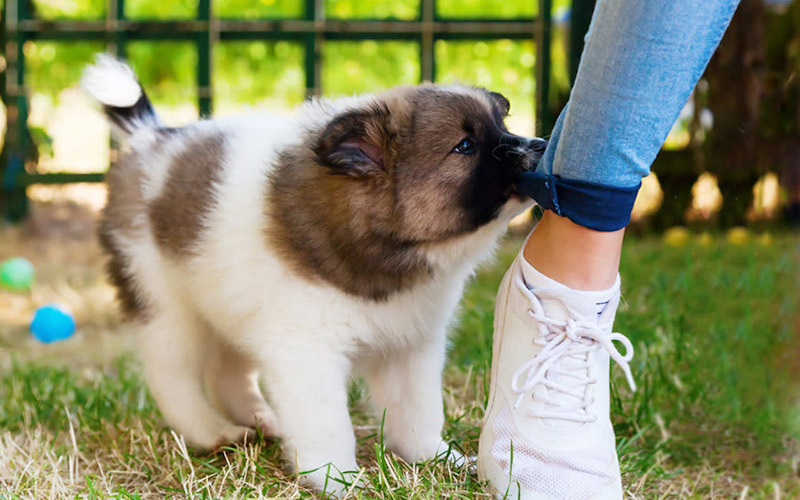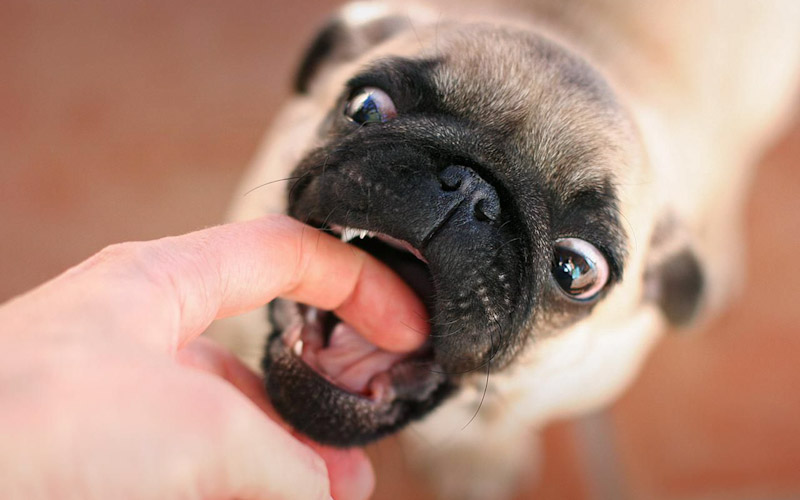Worried after your dog bit your child? Understand the reasons behind dog bites & learn how to prevent future incidents.

Common Reasons for Dog Bites:
Dogs are loyal and loving companions, but sometimes they may bite humans for various reasons. Some of the most common reasons for dog bites are:
- Fear: Dogs may bite when they feel scared or threatened by something or someone. For example, a dog may bite a child who approaches them suddenly or makes loud noises.
- Pain: Dogs may bite when they are in pain or discomfort due to an injury, illness, or age-related condition. For example, a dog may bite a child who touches their sore spot or tries to move them.
- Feeling Cornered or Threatened: Dogs may bite when they feel trapped or have no escape route from a stressful situation. For example, a dog may bite a child who corners them in a small space or grabs their collar.
- Resource Guarding: Dogs may bite when they are protecting their food, toys, bed, or other valuable items from being taken away or disturbed. For example, a dog may bite a child who tries to take their bone or play with their toy.
- Improper Socialization: Dogs may bite when they are not used to being around different people, animals, or environments. For example, a dog may bite a child who is unfamiliar to them or acts differently from what they expect.
- Lack of Training: Dogs may bite when they are not taught how to behave properly or follow commands. For example, a dog may bite a child who does not respect their boundaries or cues.
- Medical Conditions Causing Pain or Discomfort: Dogs may bite when they are suffering from a medical condition that affects their mood, behavior, or cognition. For example, a dog may bite a child who is unaware of their condition or triggers it.
Risk Factors for Dog Bites:
Some factors may increase the likelihood of a dog biting a human, especially a child. Some of the risk factors are:
- Young Children: Young children are more likely to be bitten by dogs than adults because they may not understand or respect the dog’s body language, signals, or preferences. They may also be more prone to rough play or teasing, which may provoke the dog.
- Rough Play or Teasing: Rough play or teasing may trigger the dog’s natural instincts to chase, bite, or defend themselves. For example, pulling the dog’s tail, ears, or fur, hitting or kicking the dog, or running away from the dog may cause the dog to bite.
- Lack of Supervision Around Children and Dogs: Lack of supervision may result in accidents or misunderstandings between children and dogs. For example, a child may accidentally hurt the dog or the dog may misinterpret the child’s actions or intentions.
- Certain Dog Breeds: Certain dog breeds may be more prone to biting than others due to their genetic traits, temperament, or history. For example, some breeds may have a stronger bite force, a higher prey drive, or a lower tolerance for stress or stimulation.

Preventing Dog Bites in the Future:
Dog bites can be prevented by taking some simple steps to ensure the safety and well-being of both children and dogs. Some of the preventive measures are:
- Supervise Interactions Between Children and Dogs: Supervise all interactions between children and dogs and intervene if necessary. Teach children how to approach, pet, and play with dogs safely and respectfully. Never leave a child alone with a dog, even if the dog is familiar or friendly.
- Teach Children How to Respect Dogs: Teach children how to read and respect the dog’s body language, signals, and preferences. For example, teach them to avoid eye contact, not to disturb a sleeping or eating dog, and to back away if the dog growls, barks, or shows teeth.
- Train Your Dog with Positive Reinforcement Techniques: Train your dog with positive reinforcement techniques that reward good behavior and discourage bad behavior. For example, teach your dog to sit, stay, come, and leave it. Avoid using harsh or punitive methods that may cause fear, pain, or aggression in your dog.
- Socialize Your Dog Properly From a Young Age: Socialize your dog properly from a young age by exposing them to different people, animals, and environments in a positive and controlled manner. For example, take your dog to puppy classes, dog parks, or pet-friendly places. This will help your dog become more confident, friendly, and adaptable.
- Identify and Address Signs of Aggression in Your Dog: Identify and address any signs of aggression in your dog before they escalate to biting. For example, look for warning signs such as growling, snarling, snapping, or showing teeth. If you notice any of these signs, consult a professional dog trainer or behaviorist for advice and assistance.
- Consider Consulting a Professional Dog Trainer: Consider consulting a professional dog trainer or behaviorist if you have any concerns or questions about your dog’s behavior or training. They can help you understand your dog’s needs, personality, and triggers, and provide you with customized solutions and strategies to prevent dog bites.
What to Do After a Dog Bite:
If your dog bites your child, you should take the following steps to deal with the situation:
- Seek Medical Attention for the Bite Wound Immediately: Seek medical attention for the bite wound immediately, as it may be infected or cause serious complications. Wash the wound with soap and water, apply pressure to stop the bleeding, and cover it with a clean bandage. Visit a doctor as soon as possible for further treatment and evaluation.
- Report the Bite to Animal Control if Necessary: Report the bite to animal control if necessary, depending on the severity of the bite, the vaccination status of the dog, and the local laws and regulations. You may need to provide information about the dog, the child, and the incident. The dog may need to be quarantined, tested, or euthanized, depending on the circumstances.
- Evaluate Your Dog’s Behavior and Take Steps to Prevent Reoccurrence: Evaluate your dog’s behavior and take steps to prevent reoccurrence. Try to identify the reason behind the bite and address it accordingly. For example, if your dog bit your child out of fear, pain, or resource guarding, you may need to work on desensitizing, comforting, or managing your dog. If your dog bit your child out of lack of training or socialization, you may need to enroll your dog in a training or socialization program. If your dog bit your child out of a medical condition, you may need to consult a veterinarian for diagnosis and treatment.

Conclusion
Dog bites are a serious and common problem that can affect both children and dogs. By understanding the reasons behind dog bites and taking preventive measures, you can reduce the risk of dog bites and ensure a harmonious and safe relationship between your child and your dog. If your dog bites your child, seek medical attention, report the bite, and evaluate your dog’s behavior. If you need any professional help, do not hesitate to contact a veterinarian or a dog trainer. Remember, prevention is better than cure, and understanding is better than blaming.
